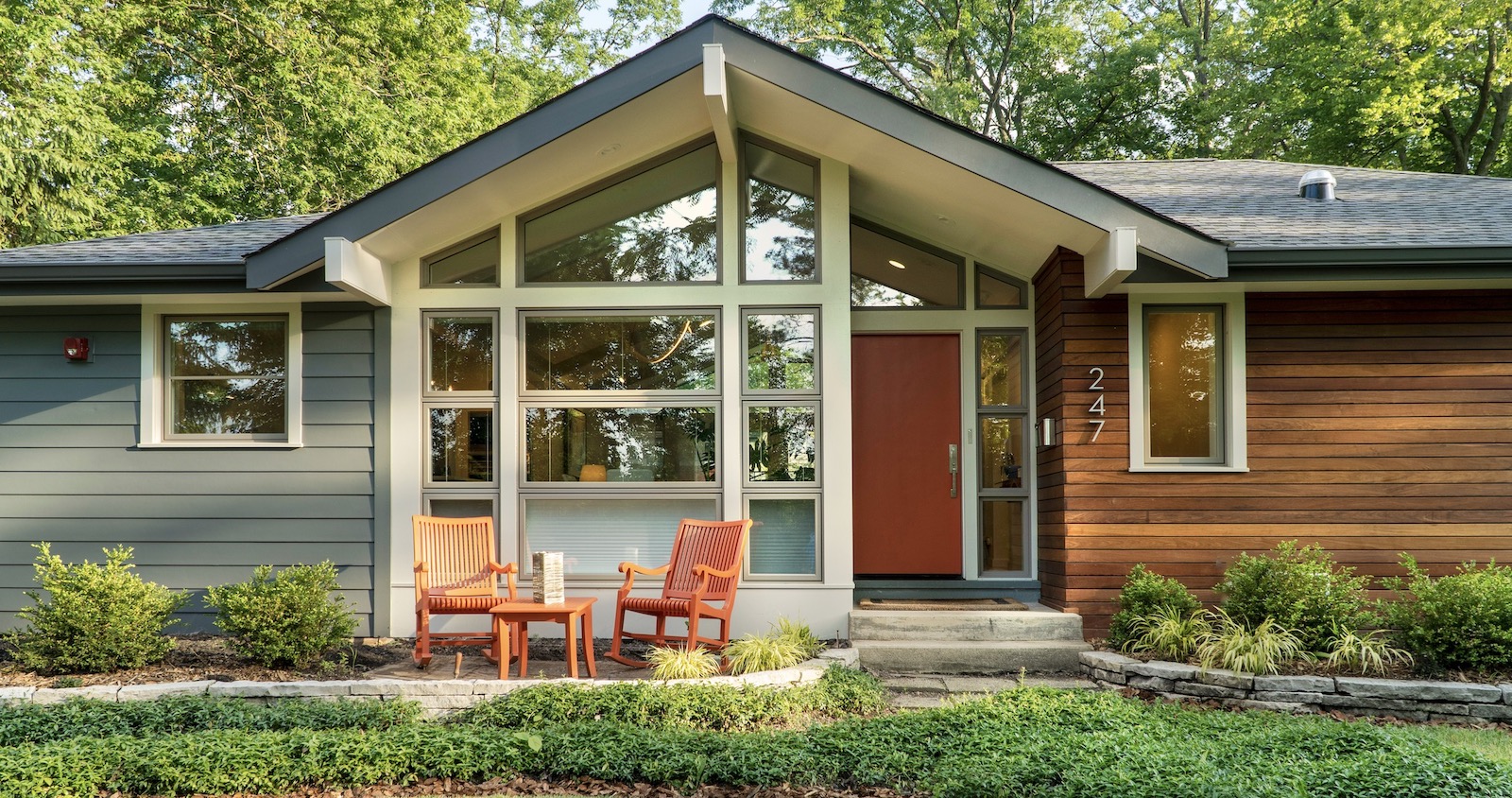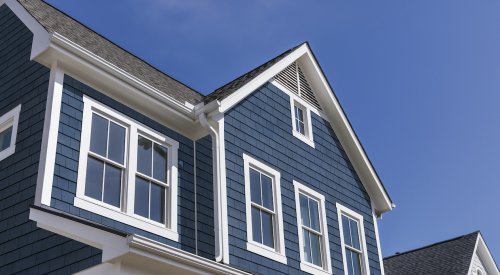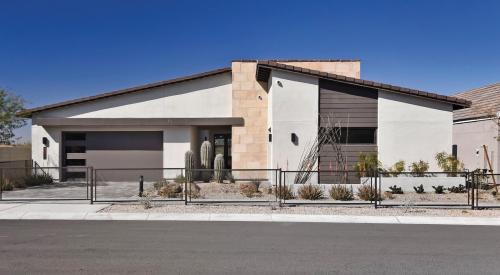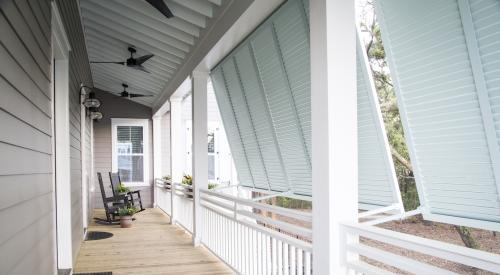According to the synopsis of an educational session at the 2021 International Builders’ Show (IBSx), today’s homebuyers crave permanence and authenticity, and perhaps especially so when it comes to exterior finishes. The question is, what materials embody these qualities? We tapped the speakers from that session, and a few other experts and trend-watchers, to reflect on popular cladding materials and how COVID-19, climate change, and a new generation of homebuyers are determining what drives that demand.
Brick Still Leads as the Preferred Exterior Cladding
As the leading exterior cladding material, brick appears to satisfy all aspects of homebuyers’ desire for permanence and authenticity, a recent report from Home Innovation Research Labs shows. Ed Hudson, Home Innovation’s director of market research, cites a solid three-year growth trend for brick, saying the material supports the perception of “beauty, quality, and safety” among respondents.
But, as John Guilliams, AIA, partner and director of design at KGA Studio Architects, in Louisville, Colo., points out, less can be more when it comes to brick: “Just because you have materials and you have access to them shouldn’t mean you use them all over.” Instead, Guilliams suggests using brick at the base of the home to ground the elevation, or as a way to identify entry elements and create a sense of arrival.
RELATED
- Manufacturer Innovation Means Plenty of Siding Options for Builders
- Roofing Products: Asphalt Still Tops, Metal Roofs Growing in Popularity
- 17 Innovative Products That Make The New American Home 2021 Exceptional
Trendspotters Rose Quint, assistant VP for survey research at the National Association of Home Builders (NAHB), and Donald Ruthroff, AIA, principal at Dahlin Group Architecture | Planning, in Pleasanton, Calif., report that using painted and lighter-colored brick can provide visual interest in sophisticated monochromatic schemes and add strong texture to the modern industrial farmhouse aesthetic that continues to be popular.
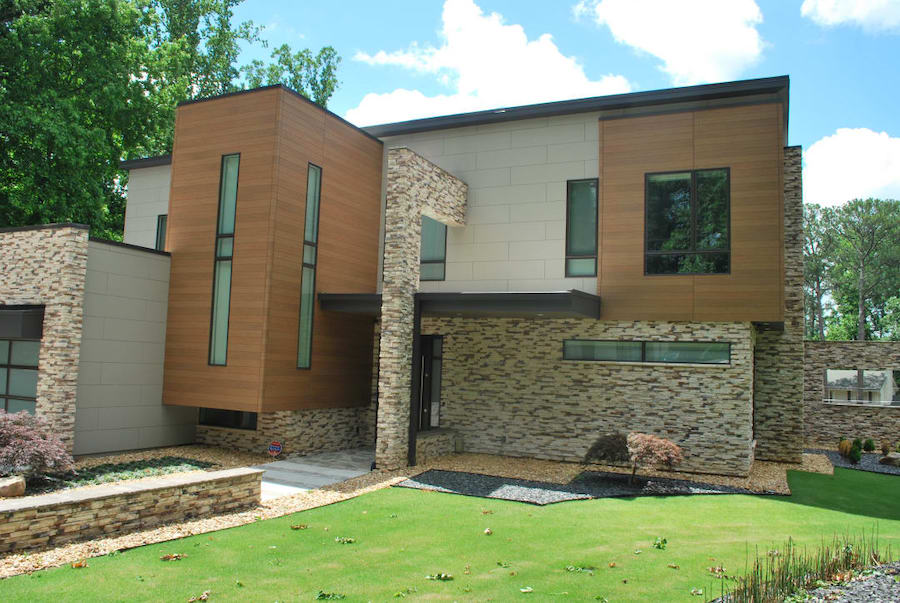
To ensure a beautiful end result, Chris Donatelli, president of Donatelli Builders, in Downers Grove, Ill., points out that brick requires proper installation and attention to the details. He relies on MortarNet to collect mortar droppings and uses weep holes to ensure incidental moisture that gets behind the material can escape.
In certain parts of the country, the notion of safety when selecting exterior cladding materials is real—and points to those materials that can better withstand natural forces. “Brick has always been part of the vernacular out West, and it is inherently fire-resistant,” says architect Andrea Morton, AIA, of aMorton Design, who recently relocated to Golden, Colo., and experienced her first wildfire season.
Morton is anxious to see fire codes and fire safety compliance conversations evolve as housing inches further into the exurbs and wildland areas, and she stresses the need for builders to find a way to build safe, affordable homes in those more vulnerable areas. “People are making second homes in the woods or the mountains their primary residences,” she observes; a ripple effect of the coronavirus pandemic.
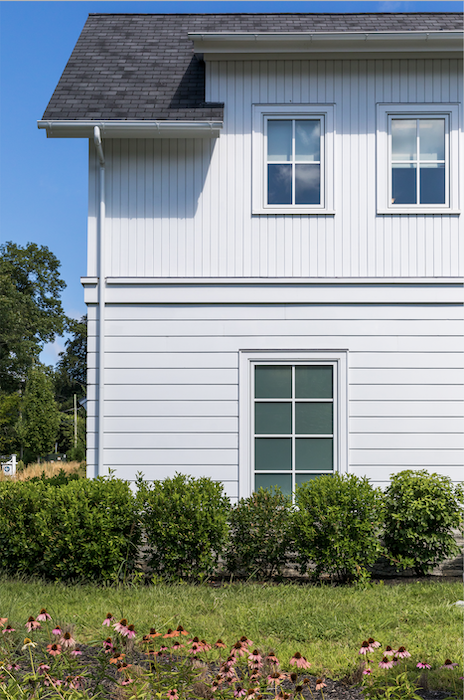
Mixing Materials on Home Exteriors
While there is growing evidence of the popularity of monochromatic and austere industrial looks, the majority of homebuyers are seeking exterior aesthetics that lean toward a carefully curated mixed palette, says Thomas Devine, AIA, senior partner at Housing Design Matters, in Clearwater, Fla. Authenticity comes from good architecture, great detailing, and a thoughtful approach to materials that are true to the local vernacular.
Guilliams emphasizes the importance of using materials to lead the eye and create a hierarchy that helps the elevation tell a story. For example, you can use color and texture to break up mass by including stucco, masonry, and exposed wood with siding in a color palette that creates a warm, authentic look. For best results, he says, only use stone in moderation: “Masonry is expensive; you don’t have to use a lot of it. A little stone on the foundation of a farmhouse in the Colorado market is indicative of the local vernacular.”
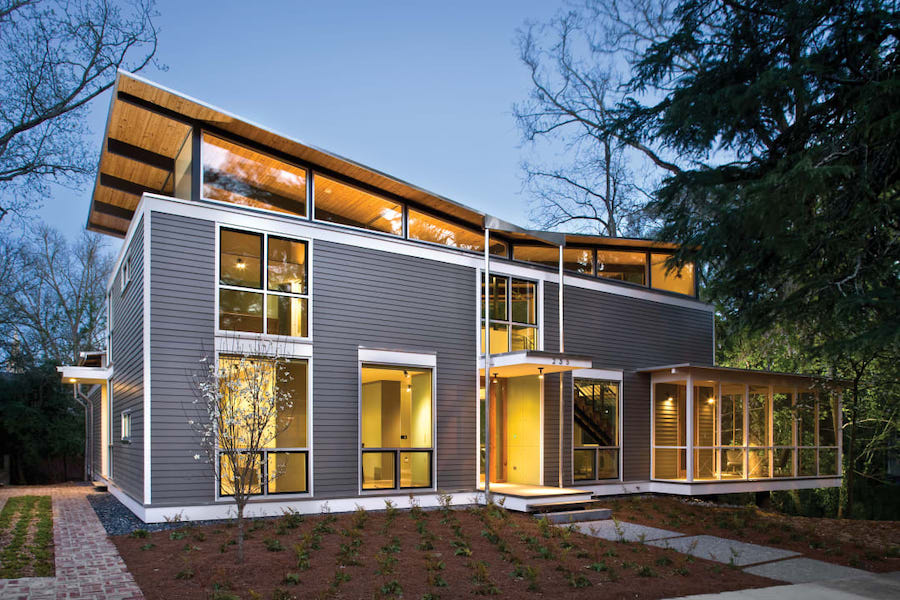
Ben Drury, brand manager for Boral Building Products, also notes that multi-textured façades remain in high demand for home exteriors. To add curb appeal and distinguish similar homes along a street, he suggests blending multiple cladding types, profiles, and colors, such as stone siding halfway up the wall, with vinyl or poly-ash siding above, and incorporating shingles or vertical accents on gables and bump-outs.
Architects and builders often turn to fiber-cement composite siding to create a mixed-materials palette because the material offers versatility in color, orientation, and panel size. “With cement fiberboard siding, we can do vertical or horizontal siding or panels for a more modern look,” says architect Nathan Kipnis, FAIA, of Kipnis Architecture + Planning, in Evanston, Ill. It’s also extremely durable when installed properly: “Installing furring strips involves dollars and labor,” Kipnis acknowledges, “but it makes the siding way more durable.”
Nature-Based Palettes for Exterior Cladding
Stucco is one way to maximize color, and it’s anticipated that Maximalism—a celebration of more color, texture, and styles—will flourish as we come out of the pandemic. “We will see color in every different way,” predicts Susan Wadden, director of color marketing for Sherwin-Williams. In addition, she points out that there’s a demographic shift to more Millennials buying homes, and this group “craves different colors and signature styles.”
But for now, the overarching trend reflects the need to stay home and reconnect with nature. “COVID has changed the way we look at housing and how we interact with our homes,” Wadden says, such as working from home but craving being outside more, which puts an emphasis on the landscape and outdoor living.
In light of humanity’s collective Earth Hour, it makes sense that the color green is rising in importance. “Talking about nature and natural inspiration,” Wadden says, “sage, evergreen, and many tones of gray-green, as well as warmer earth tones, are hitting the marketplace.”
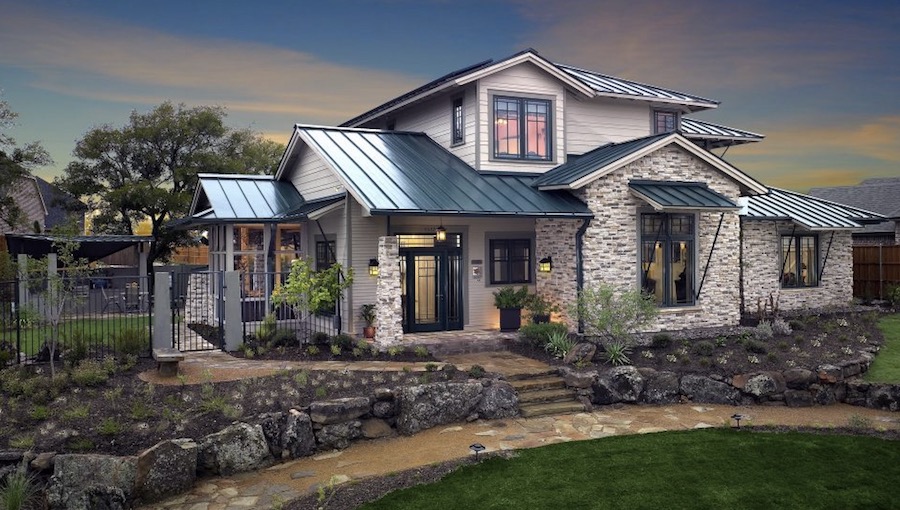
Wood Looks and Product Options for Home Exteriors
Earth tones complement palettes that include natural materials, such as exposed wood cladding. Kipnis has used stained pine, ipe, and painted wood on his projects. For modern wood looks, Donatelli favors the darker tones of shou sugi ban, a Japanese technique that preserves wood by charring it with fire.
He also likes the durability of Accoya modified wood and, for a flawless installation, is a fan of the Grad System, a product from Kansas-based Wood Haven that uses a rail and clip system for installing the company’s pre-milled lumber planks, which decreases the margin for error during installation and saves valuable time on the jobsite. “The more you can do to have things prepared before they get to the project, the less you have to do from the scaffolding,” Donatelli points out. “And the more you can do with two feet on the ground, the better.”
Exterior Cladding Installation Made Easier (and Safer)
It turns out the COVID-19 pandemic is affecting not only exterior cladding choices, but also their method of installation, as adoption of off-site components picks up speed.
Chris Donatelli, president of Donatelli Builders, in Downers Grove, Ill., knows the advantages of having components prepared before they get to the jobsite, but also that doing so has never been more relevant than right now, as builders seek faster, cheaper, and more flexible and predictable methods of construction to save money, streamline installation, and help keep crews physically distanced to minimize contact.
At UberGreen Spaces & Homes, in Louisville, Ky., founder Sy Safi promotes prefab panels with continuous insulation as a low-carbon–footprint cladding material that offers a quicker way to get the job done. “We’ve had to pivot during the pandemic,” he says. “We’re trying to move quicker on what we’re doing with prefab ... and send wall panels out ready to install in the field with the exterior cladding already on them.”
UberGreen Spaces is leveraging its knowledge of prefabrication to move projects along more quickly on the jobsite while still offering builders cladding options.
In cases where the façade design calls for brick or other authentic site-built materials, such as wood or stone, UberGreen can provide panels that are ready to accept those cladding materials by having furring strips in the proper orientation, for example. “The builder can install any façade they like onto it,” Safi says.
Megan Mazzocco is a freelance writer based in Chicago.
